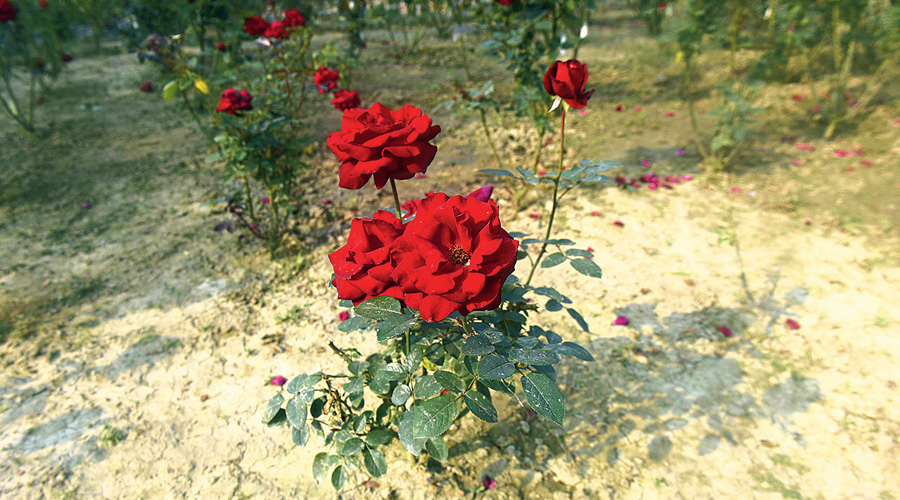A rose garden laid out at AJC Bose Indian Botanic Garden in January this year is in full bloom now.
A few yards away from the Old Banyan Tree, a 26,000sq ft of land has been developed into a rosarium with 3,000 rose plants of 300 varieties or cultivators, as they are known.
The 233-year-old garden that mainly engages in ex situ conservation of rare and endangered plants is now growing ornamental plants like roses, canna, bougainvillea in designated sections because these attract visitors.
The garden in Howrah’s Shibpur used to have a rosarium about 100 years back, behind the herbarium. But it had been neglected and the plants had died long ago.
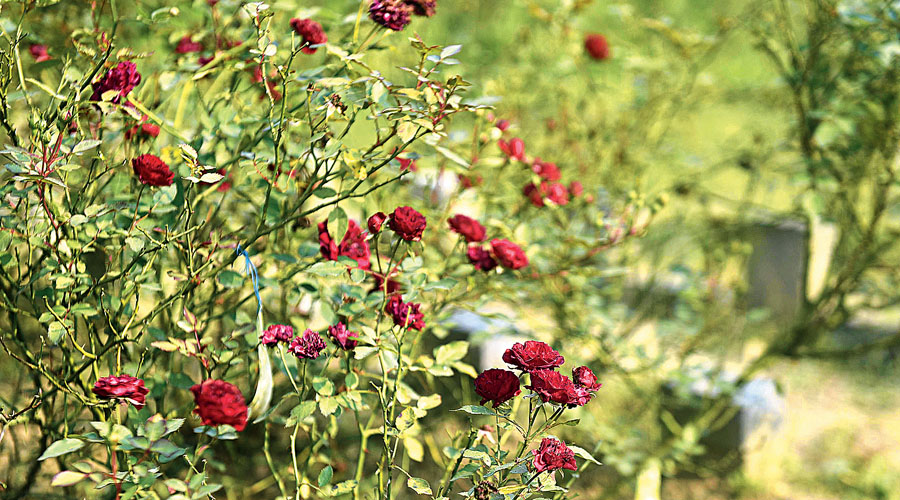
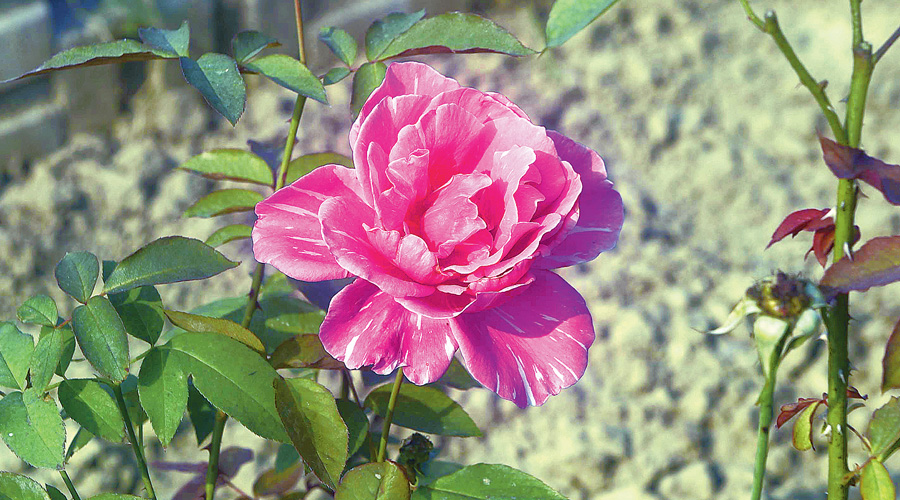
In January, the Agri-Horticultural Society of India (AHSI) had organised an international rose convention and as part of that, it had developed the rosarium for the botanical garden to showcase how the local soil and climate were conducive to rose-growing.
There are 29 beds of roses and a circular bed going around the perimeter. There are beds for Indian as well as foreign breeds of roses. There are wild roses and climbing rose plants of different cultivators.
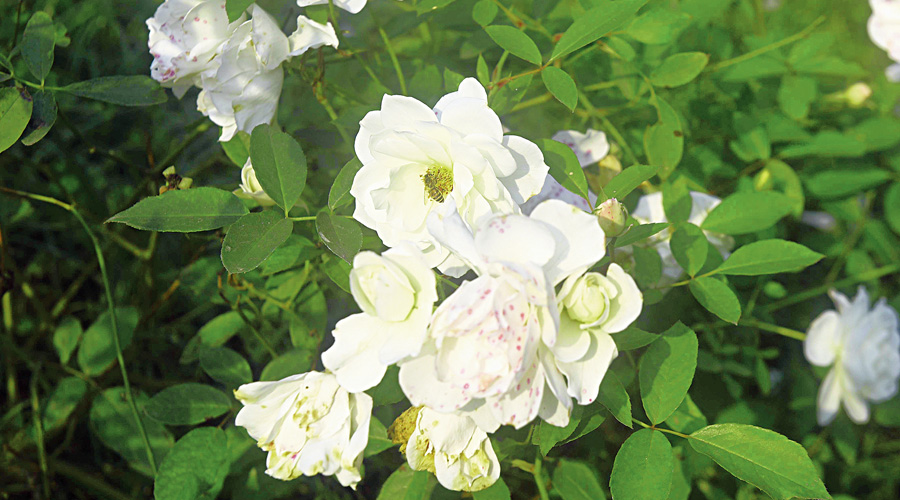
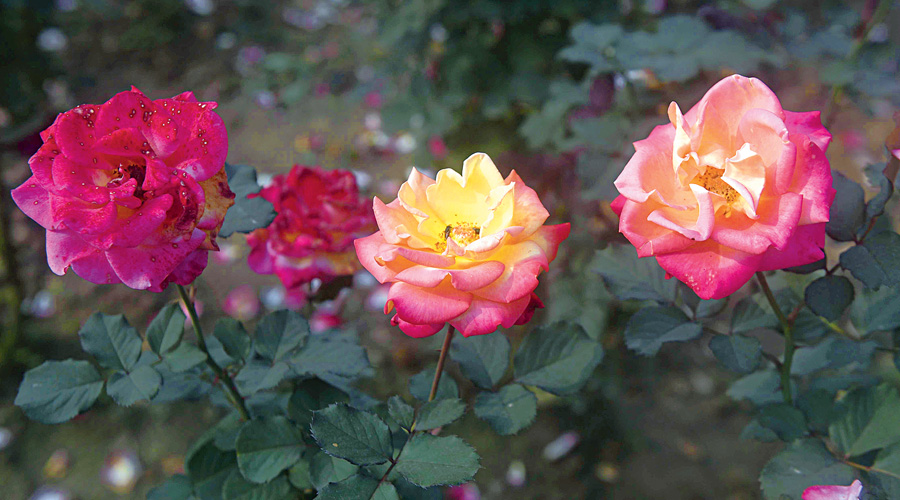
Named after EK Janaki Ammal, the first lady officer on special duty deputed by the then Prime Minister Jawaharlal Nehru to reorganise the Botanical Survey of India, the rosarium also has a rose by her name. The Janaki Ammal rose plant is at the centre of the garden and is in bloom.
There is also a Roxbourgh rose plant named after William Roxburgh, who was the first superintendent of the garden. Another variety called President Pranab has been sourced from a nursery in Kharagpur.
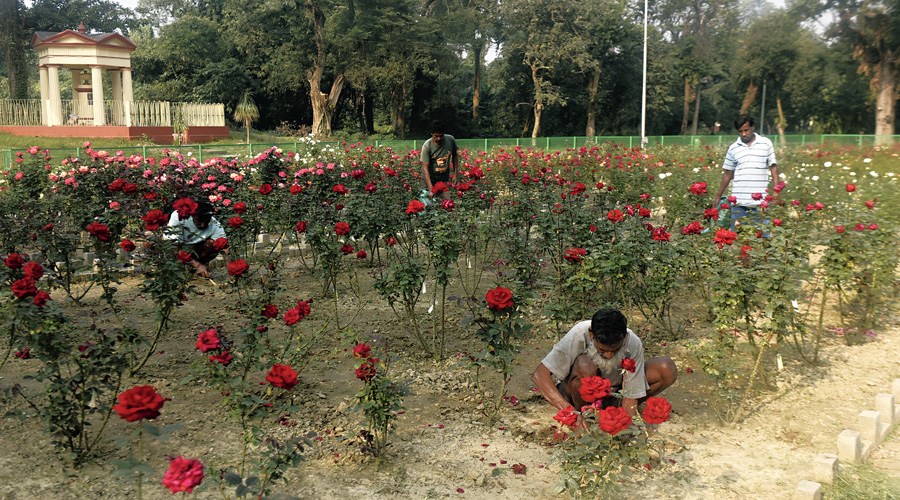
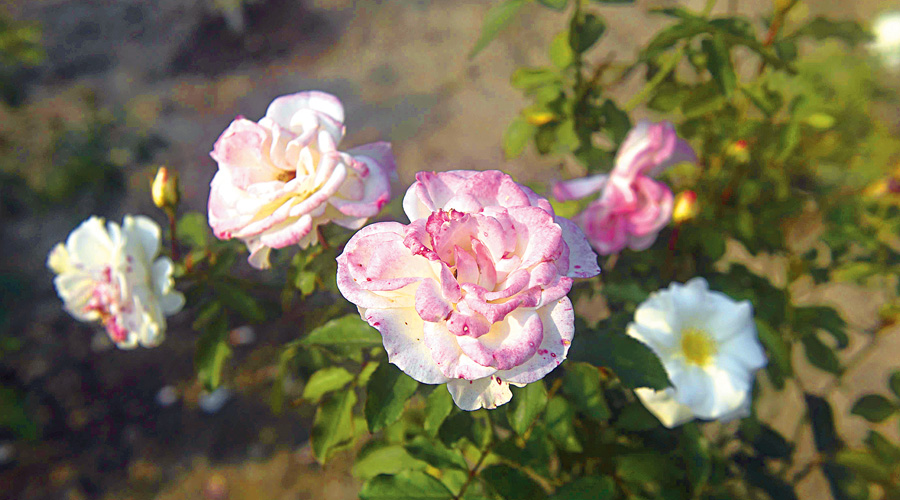
“There are 16 different colours of roses, including bi-colour hybrids,” said SP Panda, a scientist who is developing the rose garden. There are fragrant roses, green roses, climbing roses, stand roses, which are ideal for areas with snowfall, and roses without thorns.
“The nascent garden withstood Cyclone Amphan and also a fungal attack. We had supported the plants with props in preparation for Amphan. About 50 plants were damaged, we had replaced them. For fungal infection, we have used fungicides,” said Panda.
The AHSI, which had landscaped the rosarium and provided technical knowhow, is still in consultation with the botanical garden. “We laid out the garden for them, created colour blocks and recommended the varieties to be planted,” said Anupama Mitra, deputy secretary, AHSI.
No flower shows
The AHSI and Indian Botanic Garden have decided to give the annual flower shows a miss this winter.
